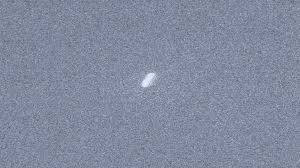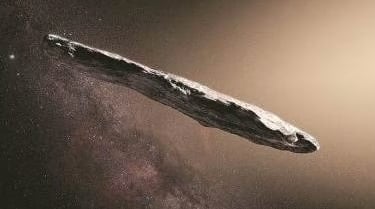Everything About Comet 3I/ATLAS - Is It a Visitor From Another Star… or Something More? 🚀
Team
11/5/20253 min read


A strange visitor from beyond just arrived in our cosmic neighborhood - yet this one didn’t come from nearby space.
Check out Comet 3I/ATLAS, only the third space wanderer from beyond our solar system spotted zipping through nearby space. Experts say it’s among the strangest finds in today’s stargazing world - though hey, a few folks are asking… might this thing actually be something else entirely?
What Makes 3I/ATLAS So Special?
Instead of looping around the Sun like regular comets, 3I/ATLAS moves along a stretched-out curve - so it won’t stay here. Rather, it's just cutting across our cosmic neighborhood after traveling from deep interstellar space. As scientists retraced its route, they saw clearly - it came from way outside the Sun’s pull, likely drifting in from some unknown gap between distant stars.
Here's the best part - this won't endanger our planet at all.
It gets nearest at around 1.8 astronomical units - about 170 million miles (270 million km) from Earth. After that, the comet swings closest to the Sun on October 30, 2025, slipping just within Mars's orbital path.
What Does It Look Like?
NASA's Hubble Space Telescope snapped a stunning shot of 3I/ATLAS on July 21, 2025 - a bright tear-shaped glow wrapped in a hazy cloud of debris. Since Hubble needed to follow the comet zipping across space, distant stars turned into long trails, giving the scene an eerie, dreamlike feel. Experts guess the comet's core - its frozen center - is anywhere from 440 meters up to 5.6 kilometers wide. That means it might match a tall building... or even stretch like a tiny mountain.
NASA’s Eyes Are on It
Nearly all big NASA missions today are starting to focus on this cosmic traveler from beyond. Instruments like Hubble, James Webb, TESS, Swift, SPHEREx - alongside the Perseverance rover still rolling on Mars - are gearing up to check it out. Meanwhile, probes such as Psyche, Lucy, the Parker Solar Probe, plus ESA’s JUICE mission might snap fresh readings while 3I/ATLAS zips by.
These linked sightings could let researchers find hints on what it's built from - maybe ice, or metal, possibly organic stuff, or even some material nobody's come across yet.
The Timeline of Discovery
The ATLAS telescope - based in Rio Hurtado, Chile - caught sight of the space object first on July 1, 2025; yet when scientists checked earlier records, they realized 3I/ATLAS showed up in shots from Hawaii and Palomar Observatory in California dating back to June 14 that same year.
Its label, 3I/ATLAS, shares what it's about:
“3I” stands for the third space wanderer found beyond our solar system
“ATLAS” = called this because of the telescope setup that spotted it
How Rare Is This?
Before 3I/ATLAS showed up, just two space objects from outside our solar system had been spotted:
ʻOumuamua (1I/ʻOumuamua) - the cigar-shaped mystery object discovered in 2017 that sparked debates about alien technology.
Comet Borisov (2I/Borisov), spotted back in 2019, acted much like your average ice-rich visitor from deep space.
So now there are just three like it - this space wanderer lets us peek at stuff built near a different sun.
Is It Just a Comet… or Something Else?
Though experts clearly label 3I/ATLAS a comet, its strange birthplace along with extreme velocity has sparked fresh talk of space-faring gadgets or gear from distant worlds.
When 'Oumuamua sped up oddly in 2017, Harvard's Avi Loeb guessed it could be man-made - a hunch folks still argue over now. While 3I/ATLAS acts more like a regular comet, researchers won't dismiss the idea of uncovering fresh clues on how distant solar systems come together or change.
What’s Next?
3I/ATLAS will still show up in Earth-bound scopes until September '25. Then, it'll swing behind the Sun - out of sight for a bit - only to pop back around the opposite flank by December's start that year, offering researchers one more window to check it out before it drifts off into the outer dark for good.
Final Thoughts
In deep space, far from any star, you might think nothing links one place to another. Yet every now and then, something like 3I/ATLAS swings by, showing us we’re not alone out here - instead, caught in a wide, puzzling cosmos full of drifting visitors.
Could this space rock simply be frozen debris from deep space? Yet maybe - just maybe - it carries clues about a distant planet, far beyond our reach.






